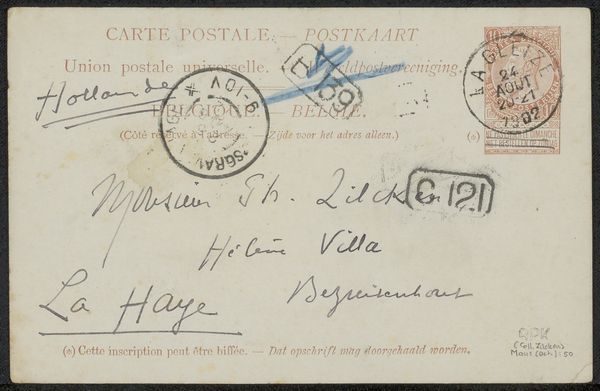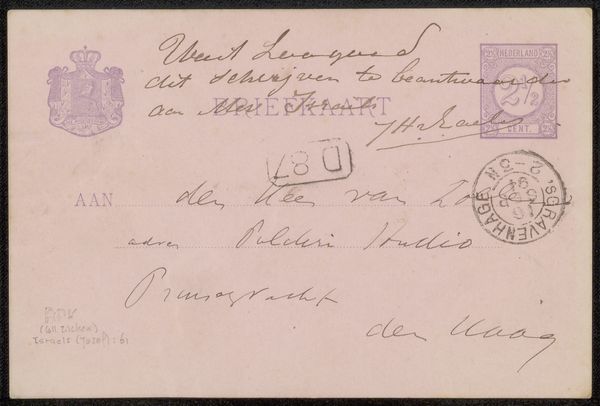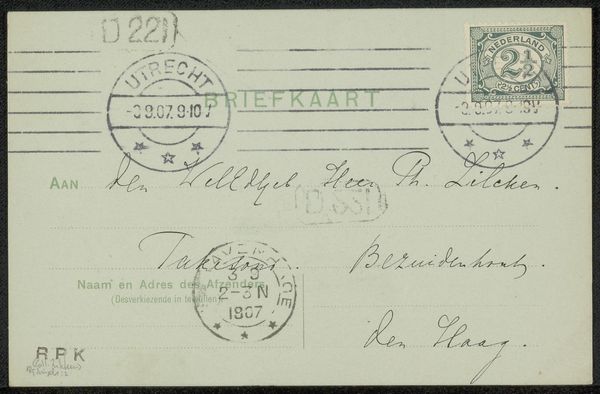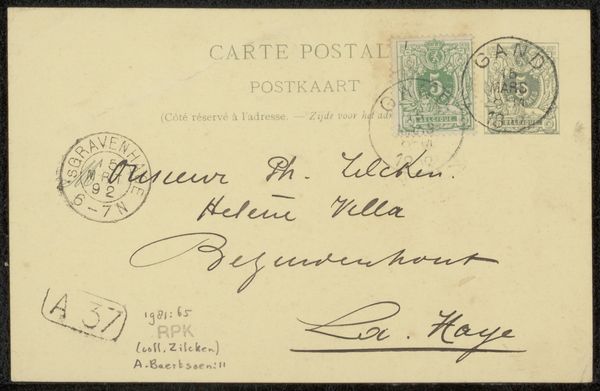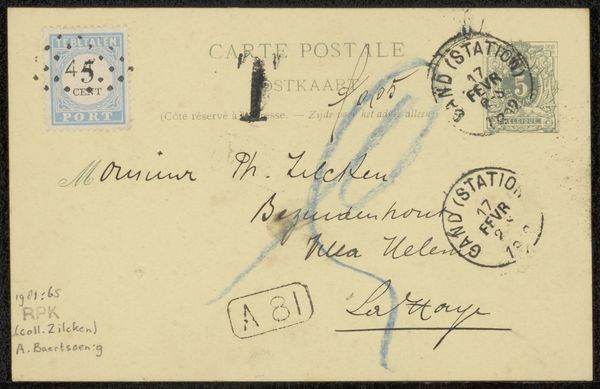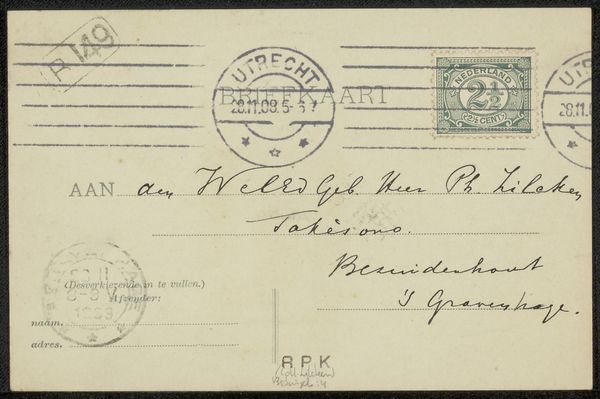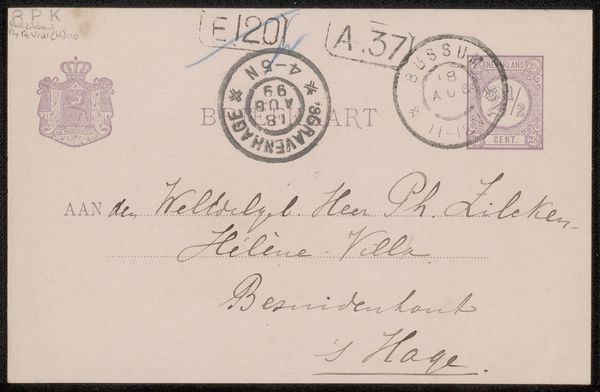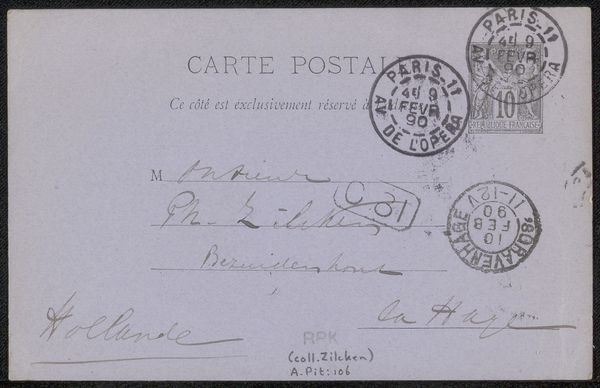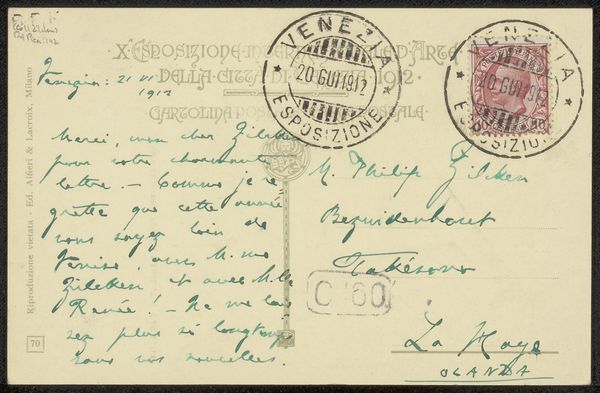
print, paper, photography
#
hand-lettering
# print
#
hand drawn type
#
hand lettering
#
paper
#
photography
#
calligraphy
Copyright: Rijks Museum: Open Domain
Curator: This printed piece is a vintage postcard, possibly dating from 1910 to 1923, titled "Briefkaart aan Philip Zilcken," created by Gabriel Mourey. The card features both print and photographic elements. Editor: Hmm, interesting. It feels incredibly fragile, almost whispering from another time. The yellowish paper gives it this ghostly quality, like an echo of a forgotten correspondence. I immediately focus on the faded stamps; there's something intensely poignant about those material remnants of past communications. Curator: The various postal markings—the circular Brussels stamp, the embossed green Brussels Exhibition stamp, the hand-lettered address—tell a rich story. Postcards from that era offer intimate snapshots into social networks, advertising practices, and aesthetic tastes. Notice the combination of precise typography with the fluid calligraphy of the recipient's name. The interplay suggests a tension between impersonal efficiency and individualized connection. Editor: Absolutely. That hand-lettering is amazing! Look at the way "La Haye" swoops under the recipient's address. The flourishes add a real sense of personality, almost theatrical, in contrast to the stern bureaucratic feel of the stamps above. What's curious is that, despite the formal stamps, there is also an air of casualness to it. Like you were saying about tension, what you have here feels very transitional. Curator: Consider too, the psychological dimension of sending a postcard. These items carried personal thoughts and well wishes, but they were also often miniature works of art themselves, carefully chosen for their aesthetic appeal. This is more than just delivering information—it's cultural signaling. A person could be defined by the content of what they were sending, so being able to write or present with elegant language and handwriting carried social status and emotional currency. Editor: That’s so true! Each visual element seems consciously chosen. So much intent put in to just sending a letter. The handwriting, especially, seems deliberate. Now that you've laid it out, the material object really does elevate what's being communicated beyond a quick memo. In that sense, everything carries an inherent symbolic value. Curator: Exactly. Each visual signifier reinforces a larger framework of shared values and expectations of that time. It acts as a subtle dance with society itself. Editor: It's like holding a tiny portal into someone's life, a century removed. A beautiful puzzle, indeed!
Comments
No comments
Be the first to comment and join the conversation on the ultimate creative platform.
